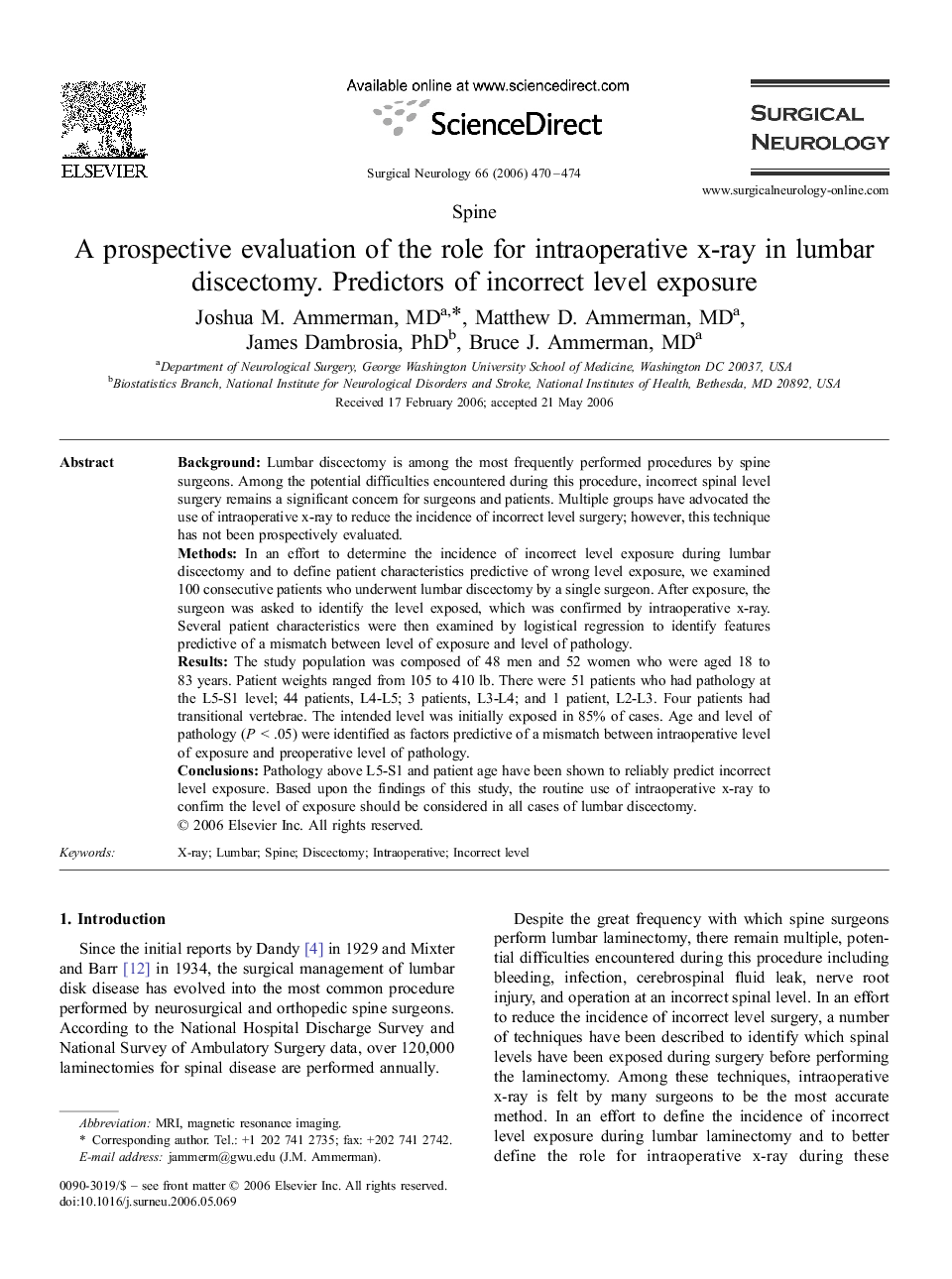| Article ID | Journal | Published Year | Pages | File Type |
|---|---|---|---|---|
| 3093844 | Surgical Neurology | 2006 | 4 Pages |
BackgroundLumbar discectomy is among the most frequently performed procedures by spine surgeons. Among the potential difficulties encountered during this procedure, incorrect spinal level surgery remains a significant concern for surgeons and patients. Multiple groups have advocated the use of intraoperative x-ray to reduce the incidence of incorrect level surgery; however, this technique has not been prospectively evaluated.MethodsIn an effort to determine the incidence of incorrect level exposure during lumbar discectomy and to define patient characteristics predictive of wrong level exposure, we examined 100 consecutive patients who underwent lumbar discectomy by a single surgeon. After exposure, the surgeon was asked to identify the level exposed, which was confirmed by intraoperative x-ray. Several patient characteristics were then examined by logistical regression to identify features predictive of a mismatch between level of exposure and level of pathology.ResultsThe study population was composed of 48 men and 52 women who were aged 18 to 83 years. Patient weights ranged from 105 to 410 lb. There were 51 patients who had pathology at the L5-S1 level; 44 patients, L4-L5; 3 patients, L3-L4; and 1 patient, L2-L3. Four patients had transitional vertebrae. The intended level was initially exposed in 85% of cases. Age and level of pathology (P < .05) were identified as factors predictive of a mismatch between intraoperative level of exposure and preoperative level of pathology.ConclusionsPathology above L5-S1 and patient age have been shown to reliably predict incorrect level exposure. Based upon the findings of this study, the routine use of intraoperative x-ray to confirm the level of exposure should be considered in all cases of lumbar discectomy.
